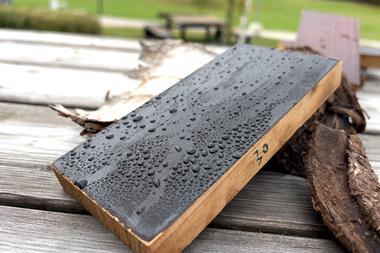Engineered wood has been created that is capable of trapping carbon dioxide by incorporating a metal–organic framework (MOF). The resulting material, which exhibited greater strength than untreated wood, could make the construction industry more energy efficient and environmentally friendly by lowering emissions and costs, the researchers claim.
‘The manufacturing of structural materials such as metals or cement represents a significant source of industrial carbon emissions,’ noted materials scientist and nanoengineer Muhammad Rahman, an assistant research professor at Rice University in Texas who is the study’s corresponding author. ‘Our process is simpler and “greener” in terms of both substances used and processing byproducts.’
Developing sustainable alternatives to metal and cement matters because construction of buildings and their use accounts for more than 40% of human-caused emissions of greenhouse gases, analysis shows.
The three main constituents of wood are cellulose fibres that provide the material with its strength, lignin – the aromatic biopolymers that give wood its colour – and hemicellulose, which is a matrix of polysaccharides that strengthens the cell wall. The mechanical properties in wood stem from the cellulose fibres, while lignin is the polymer matrix that holds the cellulose and transfers load to it.
To create their enhanced product, the Rice-led team began by removing the lignin from the wood. The material became colourless once the lignin was extracted through what is described as a simple and ‘environmentally benign’ two-step chemical treatment. Then the team used bleach or hydrogen peroxide to remove the hemicellulose, and finally the delignified wood was place in a solution containing microparticles of a MOF dubbed Calgary framework 20 (CALF-20). Unlike many existing MOFs that are quite vulnerable to moisture, CALF-20 can cope with water and still absorb carbon dioxide. Rahman says that the functional wood with 10% CALF-20 can capture 0.45 mmol/g carbon dioxide at room temperature.
As cellulose is much stronger than lignin, when lignin is taken out of the wood and the material is then compressed it shows better mechanical performance, Rahman explains. ‘Now, when we have incorporated [the] MOF (which is stronger and stiffer than lignin), the wood–MOF composite performance becomes better by the rule of mixture for composite materials,’ he tells Chemistry World.
To move this technology forward, however, the team acknowledges that it will be important to determine sequestration processes, and to develop a detailed economic analysis that can shed light on whether this material is scalable and commercially viable.

















No comments yet